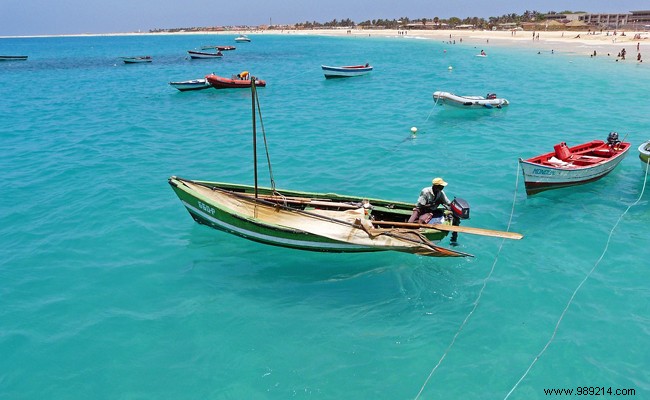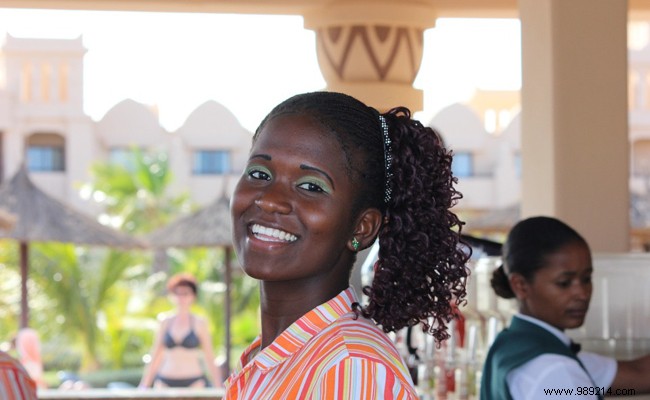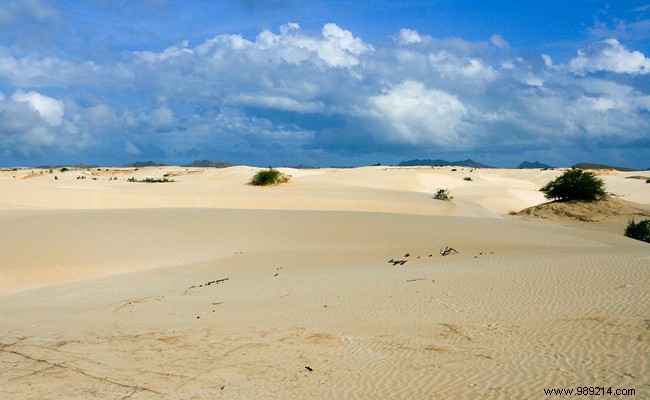Cape Verde, whose real name is the Republic of Cape Verde, is made up of ten islands located off the northern coast of Senegal in Africa. This territory with varied landscapes, from the white sand beaches to the turquoise sea, passing by its volcano or its high mountains, is conducive to holidays of idleness, cultural or sporting discoveries. Everyone can find a good reason to go on a trip to Cape Verde.

Located off Senegal, in the middle of the Atlantic Ocean, Cape Verde is a small territory of 4,000 km 2 made up of islands and islets for some uninhabited. Together with the Azores, Madeira and the Canaries, Cape Verde forms the archipelago of Macaronesia.
According to legend, when God created the world, he threw away the handful of earth he had left and gave birth to the Cape Verde Islands. Geologically, Cape Verde was formed following volcanic episodes. Only one island, the island of Fogo, keeps track of it:it is home to a still active volcano, the Pico de Fogo, which culminates at 2,829 meters. The two westernmost islands of Cape Verde, Santo Antão and São Nicolau, offer both arid and very green mountain landscapes that can recall the landscapes of the Andes mountain range.
Cape Verde is also beaches, black sand for the volcanic island of Fogo, or white sand that stretch for miles on the islands of Sal, Boa Vista and Maio where turtles come to lay their eggs. summer. It is not always possible to swim on these beaches because the currents are strong there.
Each of the ten islands that make up Cape Verde offers particularities that will delight visitors. By their paradisiacal landscapes as on the islands of Boa Vista and Sal, by their wine and coffee cultures on the island of Fogo, by the most African of the Cape Verdean islands, the island of Santiago, or by the high mountains, ravines and valleys, suitable for extreme sports activities, of the island of Santo Antão.

Independent since 1975, Cape Verde is still marked by the occupation of the Portuguese since their arrival on these islands in the 15th century. Portuguese is also the official language in Cape Verde. The islands are mostly inhabited by Creoles, but also by a quarter of Africans. Cape Verde has a UNESCO World Heritage Site:Cidade Velha , which is the historic center of the city of Ribeira Grande located south of the island of Santiago. It is recognized as such for its monuments, its flora but also for having been a major place of the appearance of the Creole culture.
Music holds a very important place in Cape Verde. His style is recognized worldwide thanks to the singer Cesaria Evora who interpreted "mornas", typical songs from Cape Verde, reminiscent of Portuguese fado or Argentine tango.
Parties are very numerous in the Cape Verde Islands. They are most often dedicated to a saint, notably Saint John. During these festivals, you can attend masses, processions, listen to music and see traditional dancers, without forgetting the great meals based on typical dishes.

Due to its climate, it is possible to go on a trip to Cape Verde all year round:between December and June, it is the period of the dry but windy season, between June and October, the temperatures are milder with less wind, but it is the rainy season. As for identity documents, a visa and a passport are necessary to go to Cape Verde. It is necessary to plan a fairly substantial budget because the prices offered for accommodation and catering on the Cape Verdean islands are quite high. Please note that the credit card is not used everywhere. The local currency is the Cape Verdean escudo.
Almost all the islands have their airport, but arriving in Cape Verde is through the international airports of Sal, Praia, Boa Vista and São Vicente. Then, you have to take the boat for the inter-island connections.